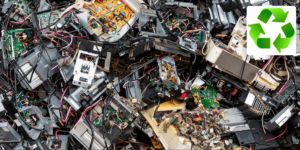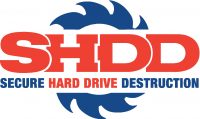
What Happens to Your Data During Secure Hard Drive Destruction?
Have you ever wondered what happens to your data when you dispose of an old hard drive?
Data privacy has become a crucial concern for individuals and organisations in today’s digital age.
With the ever-increasing amount of data stored on hard drives, it’s essential to ensure that sensitive information is destroyed securely when it’s no longer needed.
In this article, we’ll closely examine what happens to your data during secure hard drive destruction.
Hard Drive Destruction: Why is it important?
Before diving into what happens to your data during secure hard drive disposal, it’s essential to understand why this process is so important. Simply deleting files from your computer doesn’t necessarily mean they have been permanently erased.
In most cases, they remain on the hard drive, and it’s possible for someone with the right tools and knowledge to retrieve them. This means you must protect your data securely to avoid putting yourself and your organisation at risk.
Secure hard drive destruction is a process that ensures that the data on a hard drive is completely destroyed beyond retrieval. This process involves physically destroying the hard drive, ensuring no data can be recovered.
In addition to providing peace of mind, secure hard drive destruction also helps to ensure that organisations comply with data protection regulations such as the Protective Security Policy Framework (PSPF), Defence Security Principles Framework (DSPF) and Information Security Manual (ISM).
What Happens During Secure Hard Drive Destruction?
Secure hard drive destruction is a part of the multi-step disposal process involving several stages to ensure data is secure throughout the disposal process. Here’s a closer look at what happens during the process:
1. Collection and Transport
The first step in secure hard drive destruction is collecting the assets in which the hard drives are stored (ICT systems ie. servers or computers etc.) that need to be destroyed and transporting them to a secure facility. This is usually done by a security cleared transport professional or organisation, who will manage the process of getting the hard drives from the client’s premises and transporting them securely to the secure facility in which the items will be destroyed.
2. Hard Drive Sorting and Preparation
Once the ICT assets are collected, the assets need to be stripped, exposing the bare hard drives for destruction. This involves removing any attachments or covers on the hard drive, such as screws or brackets. Then they are sorted by type and prepared for the initial step in the destruction process – degaussing (erasing the data). Erasing the data on the data holding assets is done prior to shredding of the components – if needed (depends on the security level needed for the assets).
3. Data Erasure - Degaussing and Overwriting
Degaussing is the process of removing the magnetism of the hard disc and therefore erasing the data, from the data holding device. It is a very common practice to then overwrite ones and zeroes onto the hard disc, thereby eliminating any possibility of the original data being able to be read.
4. Physical Destruction
The physical destruction of the hard drives occurs within a secure facility equipped with specialised destruction equipment. This equipment is designed to break the hard drive down into small pieces, ensuring no data can be recovered. The process can involve crushing, shredding, or disintegrating the hard drive. The particle size to which the assets are reduced, is determined by the security level to which the asset is classified and must comply with.
5. Verification and Certification
Reputable service providers will provide proof of destruction as well as certificate of destruction to the client. In certain circumstances the client will actually attend the destruction event for their assets or have a video recorded of the event. The certificate of destruction provides assurance that the assets have been destroyed in accordance with the appropriate regulations.
E-Waste Recycling: A Sustainable Solution
In addition to ensuring that data is destroyed securely, it’s responsible and becoming essential to dispose of hard drives in an environmentally friendly way. E-waste recycling is a sustainable solution that ensures that electronic waste, including the hard drives, is disposed of responsibly.
When a hard drive is recycled correctly, the valuable materials the components are made of can be extracted and reused, reducing the need for new materials to be extracted from the ground. E-waste recycling also helps to prevent toxic substances from entering the environment through being dumped in landfill, reducing the impact on human health and the ecosystem.
Conclusion
In conclusion, Secure Hard Drive Destruction (SHDD) is your partner, essential to ensuring the data in and on your assets is destroyed beyond retrieval.
Secure disposal of hard drives, involves a multi-step process that includes collection and transport, degaussing, sorting and preparation, physical destruction, verification and certification of compliance to the information security regulations.
To dispose of electronic waste sustainably, e-waste recycling is crucial. Working with a certified professional service provider ensures sustainability standards are upheld.
If you’re looking for a reliable data destruction or e-waste recycling provider in Melbourne, our professionals can help you assess, plan and protect your sensitive information.
Share It On :-
More Posts


Hard Drive Destruction vs. Data Wiping: Which Is More Secure?

The Benefits of Professional Shredding Services: Safeguarding Your Confidential Information

The Importance of E-Waste Management in Corporate Social Responsibility


